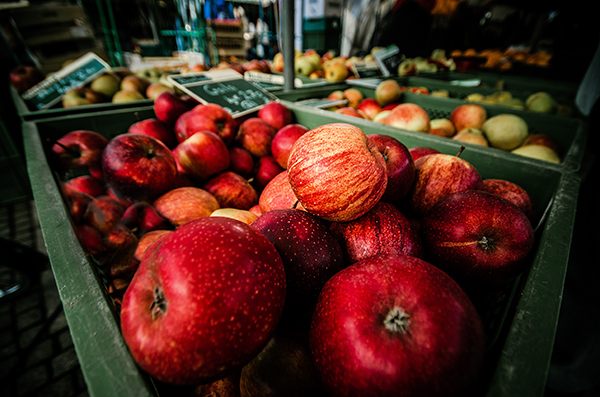As machines become more intelligent, every industry on earth will find abundant new applications and ways to benefit. For the food industry, which has an incredible number of moving parts and is especially risk-averse, machine vision and machine learning are especially valuable additions to the supply chain.
The following is a look at what machine vision is, how it can play a role in manufacturing and distributing foods and beverages, and how employers can train workers to get the most out of this exciting technology.
What Is Machine Vision?
Machine vision isn’t a brand-new concept. Cameras and barcode readers with machine vision have long been capable of reading barcodes and QR codes and verifying that products have correct labels. Modern machine vision takes the concept to new levels of usefulness.
Barcodes and product identifiers have a limited set of known configurations, which makes it relatively straightforward to program an automated inspection station to recognize, sort or reject products as necessary. Instead, true machine vision means handlers don’t have to account for every potential eventuality. Machine vision instead learns over time, based on known parameters, to differentiate between degrees of product damage.
Consider the problem of appraising an apple for its salability. Is it bruised or discolored? Machine vision recognizes that no two bruises look precisely alike. There’s also the matter of identifying different degrees of packaging damage. To tackle these problems, it’s not possible to program machine vision to recognize a fixed set of visual clues. Instead, its programming must interpret its surroundings and make a judgment about what it sees.

The neural networks that power machine vision have a wide range of applications, including improving pathfinding abilities for robots. In this article, I’ll focus on how to leverage machine vision to improve the quality of edible products and the profitability of the food and beverage industry.
Applications for Machine Vision in the Food Industry
There are lots of ways to apply machine vision to a food processing environment, with new variations on the technology cropping up regularly. The following is a rundown on how different kinds of machine vision systems serve different functions in the food and beverage sector.
1. Frame Grabbing and 3-D Machine Vision
Machine vision systems require optimal lighting to carry out successful inspections. If part of the scanning environment lies in shadow, undesirable products might find their way onto shelves and into customers’ homes.
Food products sometimes have unique needs when it comes to carrying out visual inspections. It’s difficult or impossible for fallible human eyeballs to perform detailed scans of thousands of peas or nuts as they pass over a conveyor belt. 3-D machine vision offers a tool called “frame grabbing,” which takes stills of — potentially — tens of thousands of tiny, moving products at once to find flaws and perform sorting.
2. Automated Sorting for Large Product Batches
Machine vision inspection systems can easily become part of a much larger automation effort. Automation is a welcome addition to the food and beverage sector, translating into improved worker safety and efficiency and better quality control across the enterprise.
Inspection stations with machine vision cameras can scan single products or whole batches of products to detect flaws. But physically separating these products must be just as efficient a process as identifying them. For this reason, machine vision is an ideal companion to compressed air systems and others, which can carefully blow away and remove even a single grain of rice from a larger batch in preparation.
3. Near-Infrared Cameras
Machine vision takes many forms, including barcode and QR code readers. A newer technology, called near-infrared (NIR) cameras, is already substantially improving the usefulness and capabilities of machine vision.
Remember that bruised apple? Sometimes physical damage to fruits and vegetables doesn’t immediately appear on the outside. NIR technology expands the light spectrum cameras can observe, giving them the ability to detect interior damage before it shows up on the exterior. It represents a distinct advantage over previous-generation technology and human inspectors, both of which can leave flaws undiscovered.
Tips on Training Workers to Use Machine Vision
Implementing machine vision into a productive environment delivers major benefits, but it also comes with a potentially disruptive learning curve. The following are some ideas on how to navigate it.
1. Take Advantage of Third-Party Training Courses
Don’t expect employees to hit the ground running with machine vision if they’re not familiar with the fundamentals of how it works. Google has a crash course on machine learning, and Amazon offers a curriculum as well to help companies get their employees up to speed on the technology and how to use it.
2. Get the Lighting Right
Having the appropriate intensity of light shining on the food product is essential for the machine vision cameras to get a clear photo or video. The most common types of lighting for machine vision are quartz halogen, LEDs, metal halide and xenon lights. Metal halide and xenon are better for larger-scale operations because of their brightness.
Train employees to check the amount and positioning of the lighting before each inspection station starts up for the day, so that no shadows obscure products from view.
3. Single Out Promising Subject Matter Leaders
Companies today don’t seem to have much confidence in how well they’re preparing their workforce for tomorrow, including future innovations. According to Deloitte, just 47% of companies in the world believe they’re doing enough to train their employees on the technologies and opportunities of Industry 4.0.
Machine vision does not involve buying a camera or two, setting them up, then slapping the “autopilot” button. As products turn over, and manufacturing and distribution environments change and grow over time, machine vision algorithms require re-training, and you might need to redesign the lighting setup.
Employers should find individuals from their ranks who show interest and aptitude in this technology and then invest in them as subject matter experts and process owners. Even if an outside vendor is the one providing libraries of algorithms and ultimately coming up with machine vision designs, every company needs a knowledgeable liaison who can align company needs with the products on the market.
Machine Vision Is the Future of Food Inspections
The market for machine vision technology is likely to reach $30.8 in value by 2021, according to BCC Research.
It is important to remember that neither machine learning nor machine vision are about creating hardware that thinks and sees like humans do. With the right approach, these systems can roundly outperform human employees.
But first, companies need to recognize the opportunities. Then, they must match the available products to their unsolved problems and make sure their culture supports ongoing learning and the discovery of new aptitudes. Machine vision might be superior to human eyesight, but it uses decidedly human judgments as it goes about its work.








Megan –Yes!
These are some great examples. Machines can actually also capture camera footage, and then parse it through pixelated search on a desktop machine. This means you can combine temperature scanners for things like COVID19 with things like desktop computers to trigger actions and alerts with an integrated solution. Very interesting times to see integrations between vision systems, and automation systems to be able to “automatically flag and take action”.